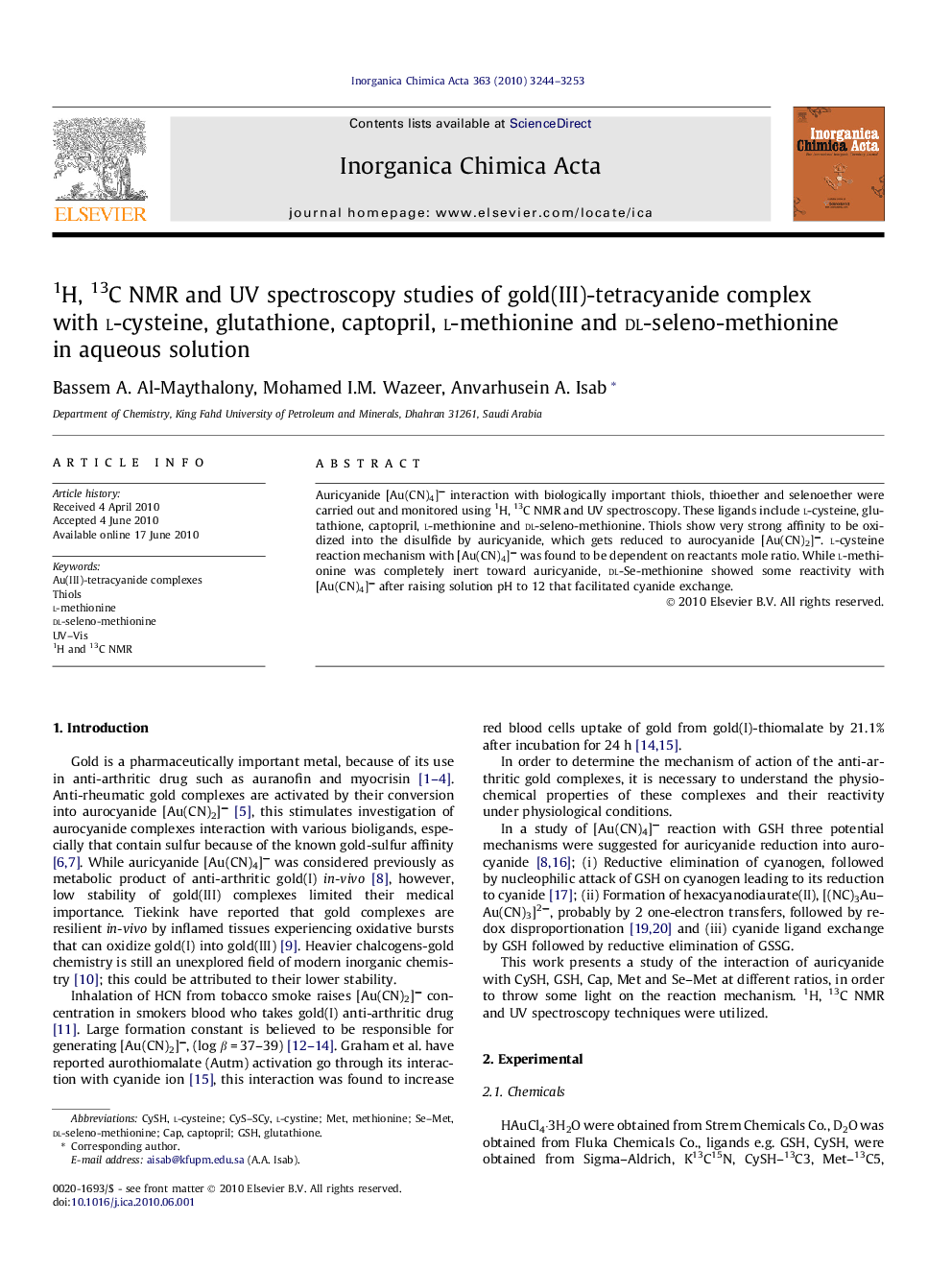| Article ID | Journal | Published Year | Pages | File Type |
|---|---|---|---|---|
| 1311166 | Inorganica Chimica Acta | 2010 | 10 Pages |
Auricyanide [Au(CN)4]− interaction with biologically important thiols, thioether and selenoether were carried out and monitored using 1H, 13C NMR and UV spectroscopy. These ligands include l-cysteine, glutathione, captopril, l-methionine and dl-seleno-methionine. Thiols show very strong affinity to be oxidized into the disulfide by auricyanide, which gets reduced to aurocyanide [Au(CN)2]−. l-cysteine reaction mechanism with [Au(CN)4]− was found to be dependent on reactants mole ratio. While l-methionine was completely inert toward auricyanide, dl-Se-methionine showed some reactivity with [Au(CN)4]− after raising solution pH to 12 that facilitated cyanide exchange.
Graphical abstractThe mechanism of thiols interaction with [Au(CN)4]− was found to be mole ratio dependent. l-methionine was inert toward auricyanide, while some reactivity were found for dl-Se-methionine reaction with [Au(CN)4]− after increasing pH to 12.Figure optionsDownload full-size imageDownload as PowerPoint slide
